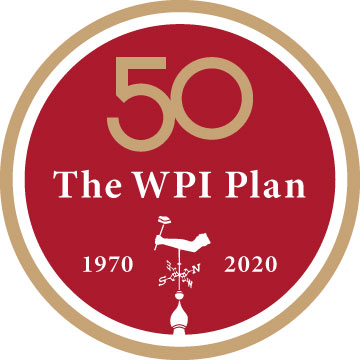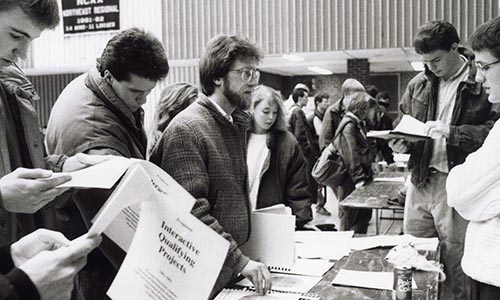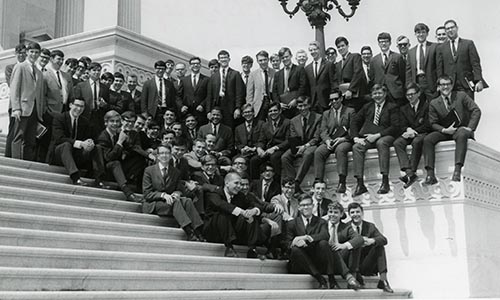Fifty Years of the WPI Plan


In 1970, WPI undertook one of the most radical transformations higher education has ever seen. Out went the conventional schedule, grading system, and degree requirements and in came a curriculum that gave students the freedom and power to shape their own educational journeys, that put the responsibility for learning squarely on their shoulders, and that gave them a remarkable tool for absorbing, retaining, and living knowledge: project-based learning.
There are many remarkable facets of the WPI Plan, but the most significant may be that it has not just endured for half a century—it has thrived by undergoing a continual process of reevaluation and renewal. As we observe and celebrate the semicentennial of the WPI Plan, discover the Plan’s beginnings, its evolution, and its future; the people who created, improved, and lived the Plan; and the impact this groundbreaking program has had—and continues to have—on the Institute, on its graduates, and on the future of higher education.


The Story of the WPI Plan
Twenty-five years ago, the WPI Journal told “The Story of the WPI Plan,” a look at how the revolutionary approach to education, implemented in 1970, came to be. A follow-up story, "Best Laid Plans," focused on the trials, tribulations and triumphs of the Plan's implementation and evolution.

A Planning Program for WPI: The Future of Two Towers
Browse the original four reports of the Faculty Planning Committee that formalized the creation and adoption of the WPI Plan.



The First Project Center
With funding from the National Science Foundation, WPI opened its first residential project center in Washington, D.C., in 1974. Since then, more than 400 projects have been led by nearly 1,200 students and sponsored by more than 80 organizations, including government and federal agencies and nonprofit groups.

How Well Do You Know the WPI Plan?
From seven-week terms to the humanities and arts requirement, discover ten of the key components of the WPI Plan.



